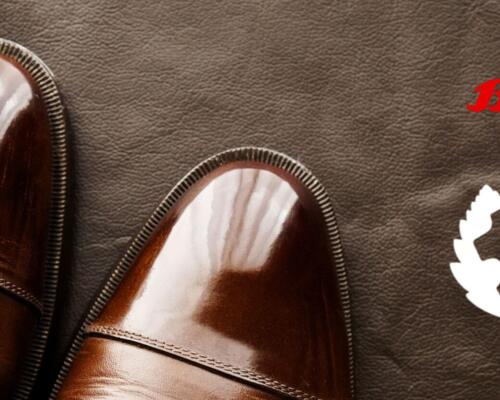Building a Sustainable Future: Our Expert David Lynch shares some insights

 We aim to reduce our impact on the environment and encourage the circularity of our products. We want to inspire consumers to choose our brand by redefining best-in-class shoes, knowing that they are designed, produced, and sold with the values that Bata stands for.
We aim to reduce our impact on the environment and encourage the circularity of our products. We want to inspire consumers to choose our brand by redefining best-in-class shoes, knowing that they are designed, produced, and sold with the values that Bata stands for.
We took the opportunity to meet David Lynch, our Chief Supply Chain Officer, to get some insight into the steps we are taking in our sustainability journey.
Tell us a bit more about your career
I have worked in the Footwear & Sporting Goods industries for most of my career of 25+ years. Though I studied Statistics and Chinese at University with no intent to enter the industry, in hindsight, having two generations of family in the footwear business ended up influencing my choices.
I have been very fortunate to work for some very successful companies in different sectors of this industry. This was predominately in supply chain-related roles in manufacturing locations, and this provided me the opportunity to work and live in several countries and spend a significant amount of time in China.
These experiences have shaped my capabilities and lead me to this role within Bata. Here, I am grateful to have the opportunity to positively influence the transformation of our supply chain in a holistic and sustainable manner.
What does ESG (Environmental, Social, and Governance) mean for you and Bata? What are the next steps?
ESG takes on the same meaning for me as it does for Bata. It embodies our value system and our efforts to continually improve the alignment of our actions to those principles throughout our value chain.
Bata has a rich history of promoting these values, and this can be seen in archived documents going back over a century. The fact that we have been establishing our own manufacturing footprint around the world since the early 1900’s, helping elevate communities out of poverty, says a lot. While in India, I saw a picture of Mother Teresa visiting our factory at Bata Nagar and this drove the point home for me.
As for the next steps, it is really about leveraging the tremendous opportunity before us to increasingly thread a holistic ESG strategy throughout our operations. Be it our factories, retail, DC’s, offices, external supply base and, of course, product, there is much we can influence in this direction. We want to prioritize and manage the many workstreams we have either initiated or have planned.
Can you tell us a bit more about our Supply Chain transformation to build a sustainable future?
The transformation involves many objectives that would take a while to describe, but the intent is to reshape the supply chain operating model so that it is better configured to facilitate actions and decisions that support sustainability. We are confronted by numerous choices each day—from product design, how we sample, what materials we use, how we reuse, how we manufacture, where we manufacture, how we package, how we transport, energy sources for our plants, how we reduce and manage waste…the list goes on.
Aligning these decisions with sustainability as a foundational principle will enable us to be significantly more impactful. This will influence practices in applying the 3Rs (Reduce, Reuse, Recycle) to product, materials, packaging, and production, as well as use of regenerative materials, what production technologies we utilize, and transportation optimization. This will result in facilitating carbon footprint reduction and improving circularity.
How can we go beyond sustainability to protect, renew, and restore our planet?
Bata is uniquely positioned to advance efforts in one of the more challenging areas of sustainability and that is circularity and the affordability of circularity. The challenge the entire industry faces at present is how to effectively close the loop when materials come from one country, are converted to shoes in another country, and then sold in a market in yet another country. Logistics footprint aside, this makes it incredibly difficult to close the loop.
At Bata, we have 21 in-house factories worldwide operating in the same markets that we serve. While other brands aspire to re-shore, we effectively operate this way already. This presents a significant opportunity to further close the loop within those markets. Increasing local material content and producing in local factories to serve local markets introduces more latitude to reuse waste through upcycling and circulating back to suppliers for reuse. All these options add up when applied in an orchestrated manner across the scale and geography that Bata affords.
Also, thanks to the multiple brands in our portfolio, we have more options to harness sustainable attributes to different degrees. Weinbrenner, as an outdoor brand, presents many opportunities for us to build-in sustainable characteristics. That said, all our brands present opportunities though to make a positive impact while contributing to sustainability progress across the industry.
Our sustainability transformation is the result of many, many localized initiatives around the world. Our people are making that progress. We aim to make a positive impact in all the communities where we work, and we look for ways to add lasting value.


